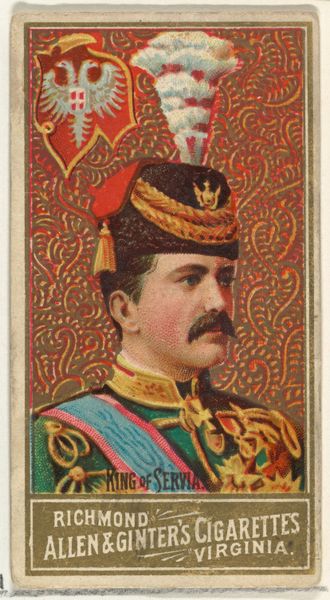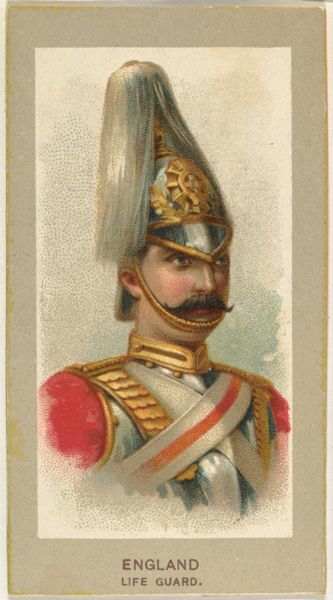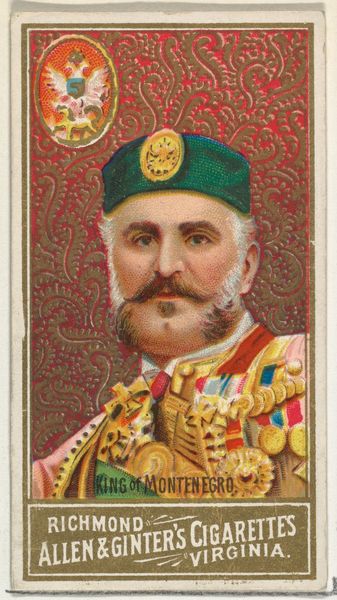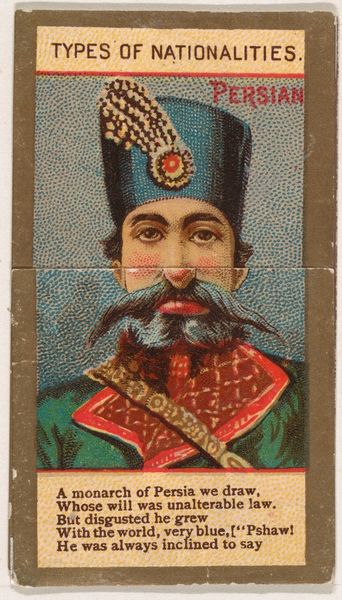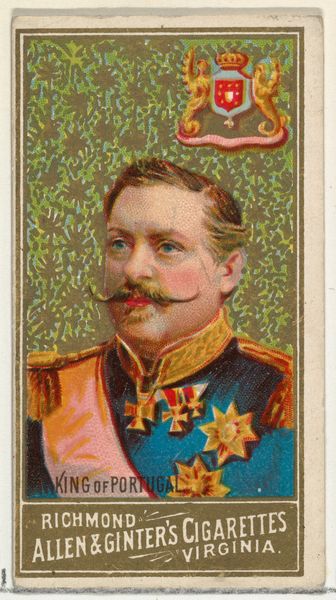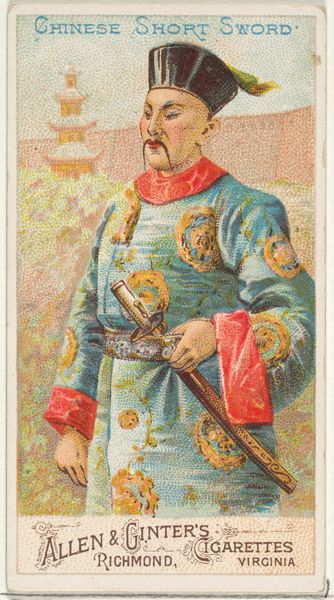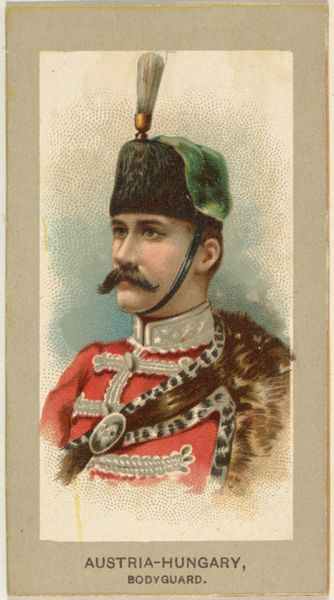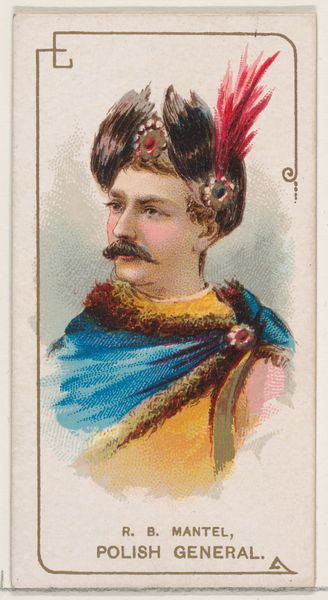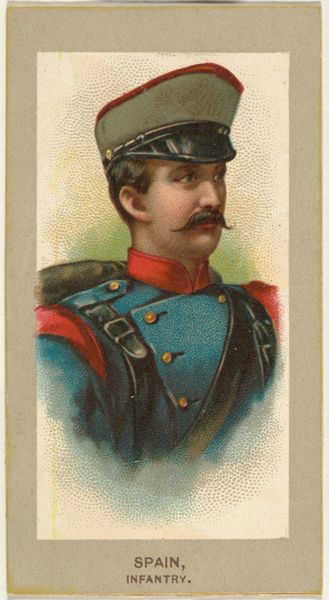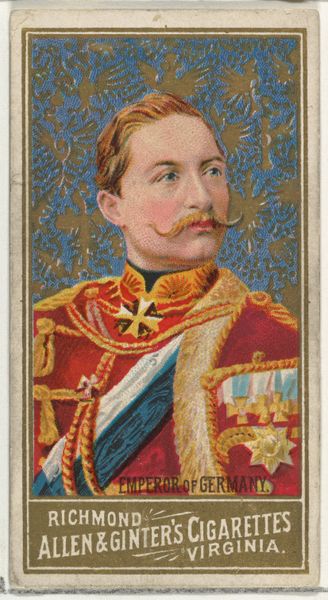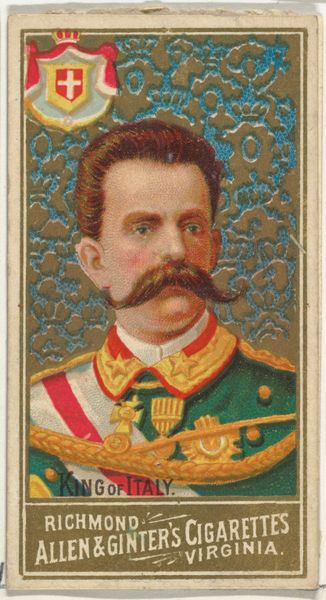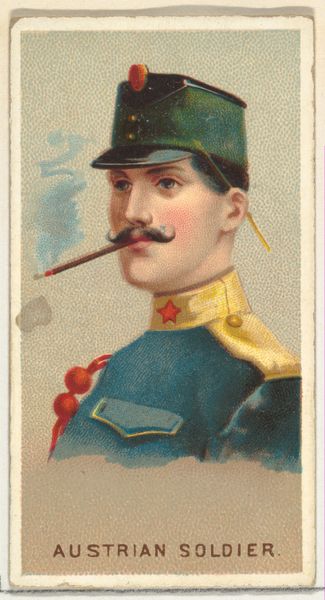
Shah of Persia, from World's Sovereigns series (N34) for Allen & Ginter Cigarettes 1889
0:00
0:00
drawing, lithograph, print
#
portrait
#
drawing
#
lithograph
# print
#
orientalism
#
history-painting
Dimensions: Sheet: 2 3/4 x 1 1/2 in. (7 x 3.8 cm)
Copyright: Public Domain
Curator: This is a lithograph from 1889 titled "Shah of Persia, from World's Sovereigns series (N34) for Allen & Ginter Cigarettes." Editor: My immediate impression is… concentrated power, visually contained within this small rectangle. The ornamentation—the jewels, the fabric—it all feels so deliberately placed to convey authority. Curator: Precisely. It’s part of a series meant to portray global leaders, and these were actually printed as collectible cards for cigarette packs. Allen & Ginter sought to exoticize these figures to create desirability around the product. Orientalism comes to mind. Editor: Definitely. There’s that Western gaze shaping the visual language, but I am drawn to the Shah’s headdress. That ornamentation isn't just decorative; it's packed with symbolic weight, projecting both religious and governmental power. I am struck by the upper left quadrant displaying a lion with the sun. It symbolizes royalty, valor, and majesty extending back to ancient Iranian traditions. It seems so very specific and distinct. Curator: It’s about constructing an image of the Shah for Western consumers. We must consider the power dynamics inherent in representation—the careful curation, shall we say, of visual elements that flatten culture for easy consumption. This commercial image appeared during a period when British and Russian interests collided in Persia, with political interference and treaty violations severely impacting Persian autonomy. The symbolism serves both to solidify the ruler's divine right to reign for those who may have seen such figures locally, and also serves as a flattening agent. Editor: So, is the lion-and-sun meant to reinforce sovereignty but then gets swallowed by its association with the packaging of tobacco and imperialism? It almost seems like an appropriation that inadvertently preserves cultural memory. Curator: A double-edged sword, certainly. It's fascinating how cultural markers can persist, altered or not, within new contexts of production and power. The lithograph freezes a moment of intersectionality. Editor: Ultimately, it’s a reminder that every image, even one intended for simple commerce, carries complex layers of history and meaning. Curator: Exactly. It challenges us to look beyond the surface.
Comments
No comments
Be the first to comment and join the conversation on the ultimate creative platform.
